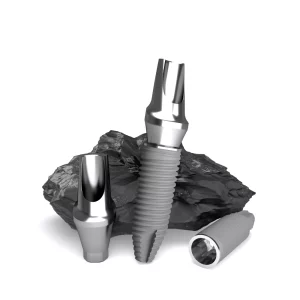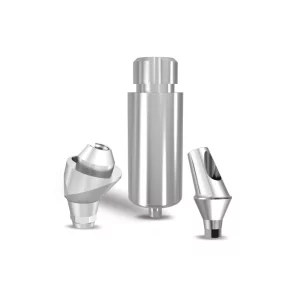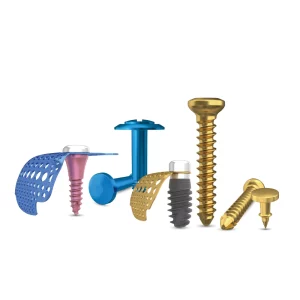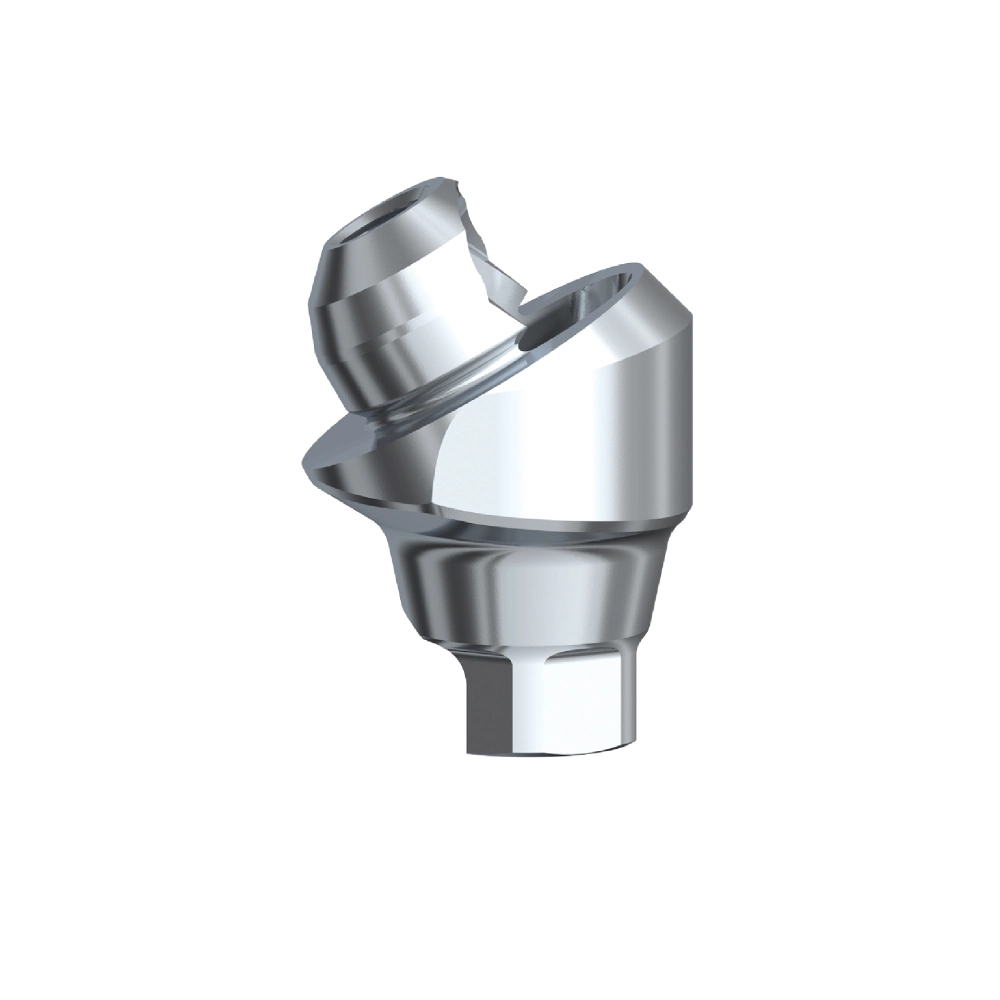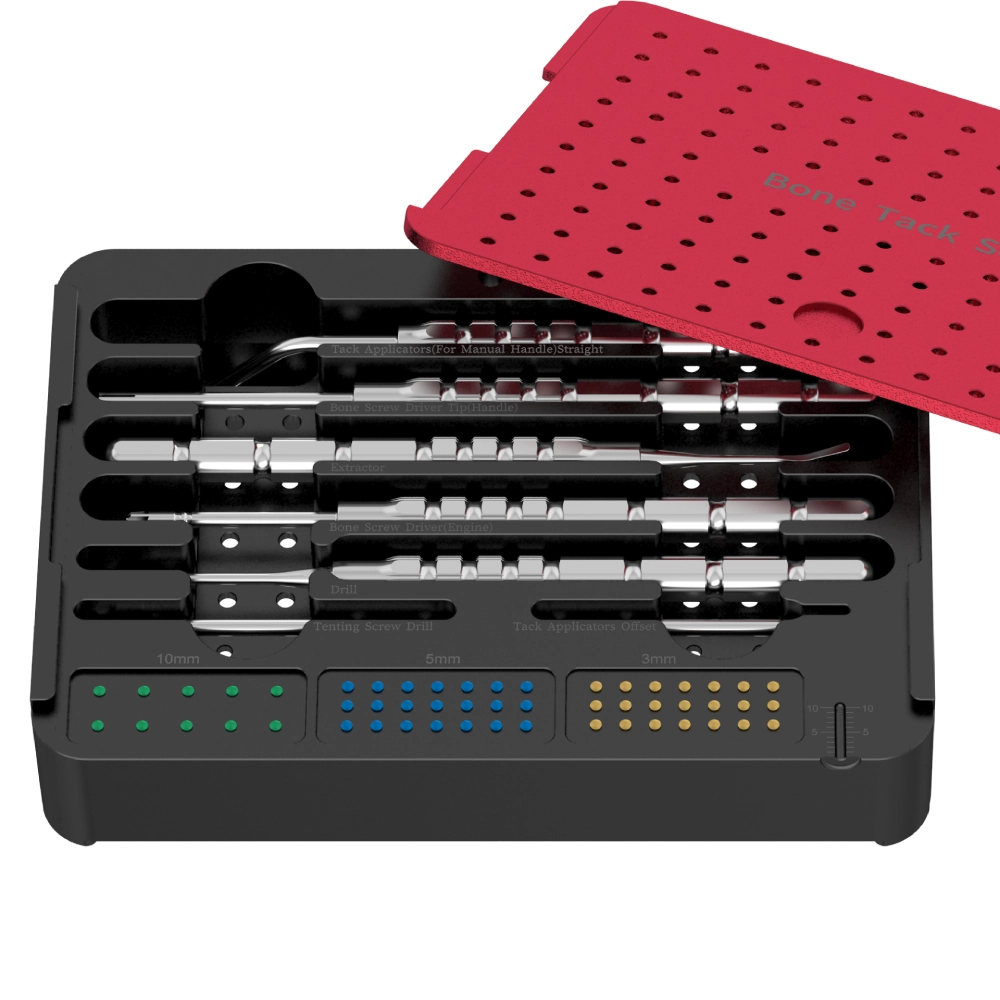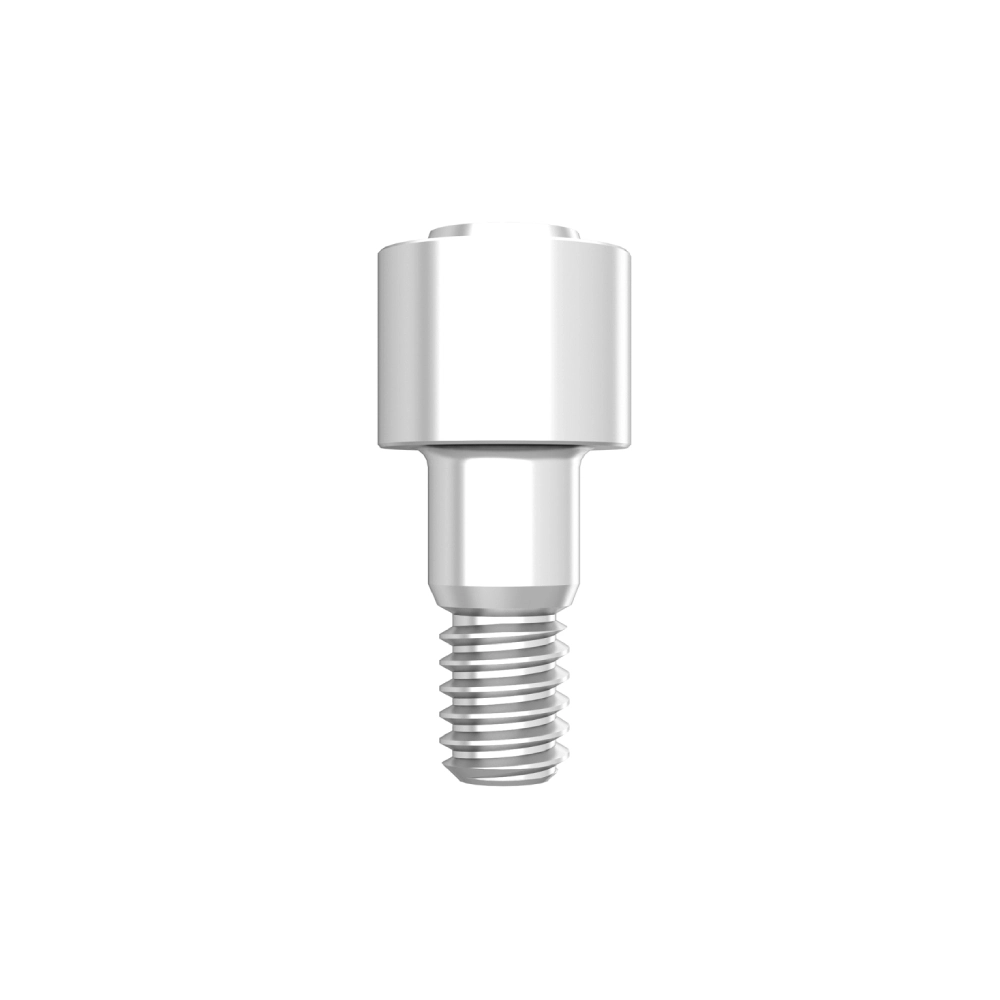
In the era of precision in implant-based dental restorations, achieving synergy between the implant and the prosthesis has become a critical factor in determining treatment success. While traditional prefabricated abutments simplify clinical procedures, their standardized design often struggles to fully accommodate individual patients’ unique anatomical structures and occlusal requirements. This may lead to poor marginal fit, compromised aesthetics, or uneven force distribution.
With the rapid advancement of digital dentistry, custom abutments have emerged as a revolutionary solution. By leveraging 3D scanning, computer-aided design (CAD), and precision manufacturing technologies, custom abutments are tailored to match each patient’s specific oral conditions, allowing for personalized adjustments in abutment shape, angulation, and transmucosal contour.
This innovation not only overcomes the limitations of traditional abutments but also offers significant advantages in aesthetic integration, biomechanical adaptability, and long-term stability. By precisely matching the surrounding soft and hard tissue morphology, custom abutments effectively prevent complications such as gingival recession and food impaction while enhancing the functionality and natural appearance of the prosthesis. As the crucial link between the implant and the final restoration, custom abutments are redefining the clinical pathway of implant restorations, paving the way for personalized and precise dental care.
What is a Custom Abutment
A custom abutment is a personalized connecting component in dental implant restoration that links the implant to the upper restoration (such as crowns or bridges). Its core value lies in breaking through the “standardization” limitations of traditional prefabricated abutments by utilizing digital technology to achieve a “tailored” solution.
Traditional abutments use a standardized design, which makes it difficult to fully meet the complex and variable anatomical conditions of the oral cavity. This may lead to issues such as mismatches between the prosthesis and gingival contour or uneven distribution of occlusal forces.
Custom abutments rely on 3D oral scanning, CAD (Computer-Aided Design), and CAM (Computer-Aided Manufacturing) technologies. Based on individual patient data such as alveolar bone morphology, gingival thickness, neighboring tooth position, and occlusal relationship, the abutment’s shape, height, transmucosal contour, and screw channel angle are precisely designed.
The technical advantages of custom abutments are reflected in three aspects: precision fit, aesthetic enhancement, and biomechanical optimization.
From manual crafting to digital production, custom abutments have become an important symbol of precision and personalization in implant restoration. They play an irreplaceable role, especially in complex cases such as immediate restoration, angled implants, and aesthetic zone restorations, demonstrating significant clinical value.
Differences Between Stock Abutments and Custom Abutments
Stock abutments excel in efficiency and cost-effectiveness but sacrifice individual adaptability. Custom abutments, on the other hand, utilize digital technology to achieve precise treatment, making them particularly suitable for patients seeking functionality, aesthetics, and long-term stability. The choice between the two should be based on a comprehensive evaluation of case complexity, treatment goals, and patient needs. The main differences are outlined in the table below:
| Comparison Dimension | Stock Abutment | Custom Abutment |
|---|---|---|
| Definition | Prefabricated standardized abutments, mass-produced in uniform sizes | Personalized abutments designed based on patient oral data and custom-made in the laboratory |
| Production Method | Industrial mass production, no need for patient-specific data | Precision machining based on oral scan/impression data through CAD/CAM technology |
| Applicability | Suitable for posterior teeth or non-aesthetic areas, simple cases | Especially suitable for anterior aesthetic areas, tilted implants, immediate restorations, and complex cases |
| Precision and Adaptability | Standardized design, difficult to match personalized gum contours, may cause poor edge fit | Fully adapts to gum shape, implant angle, and adjacent teeth, ensuring precise edge fit |
| Aesthetics | Cannot replicate natural gum contours, limited aesthetic effect | Can replicate natural emergence contours, supports personalized crown design, high aesthetic value |
| Material Options | Typically titanium or ceramic (limited material options) | Can choose from titanium, zirconia, gold, etc., meeting both mechanical and aesthetic requirements |
| Cost and Timeframe | Lower cost, shorter production time (1-3 days) | Higher cost, requires laboratory processing (about 1-2 weeks) |
| Complication Risks | May cause gingivitis or peri-implantitis due to poor adaptation | Precise design reduces inflammation risk, offering better long-term stability |
| Adjustment Needs | Often requires chair-side adjustments to fit the oral environment | Digital pre-design minimizes adjustments, enabling “ready-to-use” installation |
| Typical Application | Posterior tooth restoration, budget-constrained or time-sensitive cases | Anterior aesthetic restorations, gum recession, complex implant angles, or cases requiring long-term aesthetic stability |
How is a Custom Abutment Made?
The production of custom abutments relies on innovations in digital dentistry, seamlessly integrating personalized design with efficient manufacturing through a precise workflow. The core steps are as follows:
Data Collection
The clinician first places an implant impression coping in the patient’s mouth and uses a high-precision chairside scanner or traditional impression technique to capture three-dimensional oral data. Digital impressions eliminate errors associated with physical models and can be directly imported into the laboratory’s CAD system, ensuring design accuracy.
3D Design and Simulation
In CAD software, the technician designs the abutment’s emergence profile, margin position, and screw channel angle based on the patient’s alveolar bone shape, gum contour, and adjacent teeth. Virtual simulations allow for previewing the fit between the restoration and the natural tooth emergence profile, enabling adjustments to the abutment height and angle to optimize mechanical stability and aesthetics.
CAM Manufacturing and Material Selection
Once the design is confirmed, computer-aided manufacturing (CAM) technology is used to mill the custom abutment from solid blanks made of titanium, zirconia, or gold. Digital processing ensures precise anti-rotation engagement with the implant platform and achieves micron-level accuracy at the margins, eliminating errors common in traditional manual fabrication.
Integration and Verification
The final crown design and abutment fabrication are completed simultaneously. A 3D digital model verifies the fit between the two components. This “abutment-crown integration” process not only shortens production time but also ensures the restoration naturally adapts to the oral soft and hard tissues upon insertion, minimizing the need for chairside adjustments.
Technical Advantages
- Precision: The digital workflow eliminates human error, improving marginal fit accuracy by over 50%.
- Efficiency: The entire process, from data collection to delivery, is reduced to 7–14 days (traditional manual production requires 3–4 weeks).
- Customization: Supports personalized solutions for complex cases such as tilted implants and immediate restorations.
Through this revolutionary process, custom abutments have become a key factor in implant restoration success, driving the field of dentistry towards precision, minimally invasive techniques, and enhanced aesthetics.
Core Breakthrough of Custom Abutments – Full Platform Compatibility
Implant brands vary significantly in their platform interface designs (such as internal connection taper, anti-rotation structures, and micro-textures), which directly impact the stability and functional compatibility of the abutment. As a core technical challenge for custom abutments, full platform compatibility is crucial to ensuring seamless engagement between the abutment and implant.
DentalMaster Custom Abutments Feature 19 Brand Interfaces
Global Coverage of Leading Brands
Supports 19 major international implant system interfaces, including Straumann, Nobel, and Astra Tech, addressing clinical challenges caused by brand differences in abutment compatibility.
Precision Reverse Engineering
Utilizing high-precision 3D scanning and modeling technology, original manufacturer interfaces are reverse-engineered at a micron level to ensure the mechanical fit between the abutment and implant platform meets ISO standards.
Dynamic Anti-Rotation Optimization
With topology optimization algorithms, the inner crown structure of the abutment is designed to enhance rotational torque resistance based on the characteristics of materials like titanium and zirconia. This prevents micro-movement wear that can lead to long-term complications.
Biomechanical Validation
Finite Element Analysis (FEA) is used to simulate stress distribution under occlusal load, verifying the fatigue life of the abutment-implant structure to ensure long-term clinical stability.
Digital Intelligent Matching
Equipped with an AI-driven interface recognition system, the platform can automatically match the patient’s implant brand and model, reducing design time and minimizing human error.
Technical Advantages
- Manufacturing Precision: CNC milling precision of ±5μm, surpassing traditional casting techniques.
- Material Compatibility: Supports titanium, titanium alloy, zirconia, and PEEK for versatile biomedical applications.
- Clinical Validation: Over 50,000 multi-platform compatible abutments have been successfully applied, achieving a five-year success rate of 98.7%.
By overcoming the platform interface challenge, DentalMaster has not only achieved “one-stop compatibility” but also advanced implant restoration into a new phase that integrates standardization with personalized treatment.
Custom Abutment FAQs — Common Questions and Answers
Q1: What is a custom dental abutment?
A custom dental abutment is a personalized connector designed for dental implants, precisely manufactured using CAD/CAM technology. It aligns with the implant platform and the patient’s oral anatomy. Its key functions include:
- Securing crowns/bridges
- Transmitting biting forces
- Shaping natural gum contours
- Providing both mechanical and biological stability with the implant
Q2: What is the cost range for custom dental abutments?
The cost varies depending on materials, technical complexity, and brand differences:
- Titanium Abutment: $150-630 per unit (Cost-effective, suitable for posterior teeth)
- Zirconia/Gold Abutment: $500-1,120 per unit (Superior aesthetics and biocompatibility)
- Complex Designs (Angled/Immediate Restoration): $640-1,680 per unit
Note: Due to improved long-term stability and reduced secondary repairs, custom abutments offer better overall value than stock abutments.
Q3: What is the difference between a custom abutment and a dental crown?
- Function: The abutment acts as a “bridge” between the implant and the crown, providing support and stability; the crown handles the chewing function.
- Design Focus: The abutment must precisely match the implant platform and shape the gum profile, while the crown emphasizes biting surface and alignment with adjacent teeth.
- Material Choice: Abutments are often made from titanium or zirconia for strength and aesthetics; crowns are typically ceramic or resin for visual appeal.
Q4: What are the dental codes for custom abutments?
In the dental industry, custom abutment codes fall under the following categories:
- HS Code (Harmonized System Code) – For Import/Export Customs Clearance
- HS Code 9021.29 — Dental Fittings, Including Artificial Teeth and Dental Prosthetics
- HS Code 9021.39 — Other Artificial Parts of the Body
- CDT Code (Current Dental Terminology) – For U.S. Dental Insurance and Treatment Records
- D6056 — Prefabricated Abutment – Includes modification and placement
- D6057 — Custom Abutment – Includes placement
- D6065-D6077 — Implant-supported crowns, bridges, and dentures
- UDI Code (Unique Device Identification) – For Medical Device Tracking
Certain regions (e.g., the U.S. and EU) require implants and related components to have a UDI code to ensure traceability and safety.
For precise guidance, consult local customs authorities or dental associations based on your target market.
Q5: How is a custom healing abutment made?
- Data Collection: Obtain implant position and gingival contours via intraoral scanning or impression-taking.
- Virtual Design: Simulate the emergence profile of the healing abutment in CAD software, allowing space for gum shaping.
- CAM Manufacturing: Mill the abutment using biocompatible materials (e.g., titanium) with a smooth surface to minimize soft tissue irritation.
- Clinical Verification: Ensure the abutment fits passively with the implant platform to promote stable soft tissue healing.
Custom abutments are vital components in achieving precise, personalized implant restorations. Their design, materials, and production directly impact the functionality, aesthetics, and long-term prognosis of dental restorations.
Conclusion
As the “central hub” in dental implant restorations, custom abutments have redefined the boundaries of precision, aesthetics, and functionality through innovations in digital technology and material science.
Core Advantages
- Technological Integration: From full compatibility with implant platform interfaces to AI-driven intelligent design, custom abutments overcome challenges posed by implant brand variations and complex anatomical conditions. This shift transitions treatment planning from “experience-based” to “data-driven” approaches.
- Clinical Empowerment: With micron-level marginal precision and biomechanical optimization, custom abutments reduce the risk of complications. In the aesthetic zone, they achieve a natural gingival contour that surpasses the capabilities of traditional abutments.
- Long-Term Value Investment: While the initial cost is higher than stock abutments, custom solutions reduce the need for secondary repairs, enhance chewing efficiency, and improve aesthetic satisfaction — ultimately enhancing cost-effectiveness throughout the restoration’s lifespan.
In today’s rapidly growing demand for personalized healthcare, custom abutments are not just an upgrade in restoration techniques but also a tangible expression of the “patient-centered” treatment philosophy. Moving forward, as material performance and intelligent algorithms continue to evolve, custom abutments will drive implant restorations toward more minimally invasive, efficient solutions, establishing themselves as a hallmark of precision dentistry.


